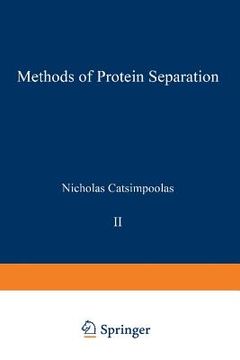Share
Methods of Protein Separation
Catsimpoolas, Nicholas (Author)
·
Springer
· Paperback
Methods of Protein Separation - Catsimpoolas, Nicholas
Choose the list to add your product or create one New List
✓ Product added successfully to the Wishlist.
Go to My Wishlists
Origin: U.S.A.
(Import costs included in the price)
It will be shipped from our warehouse between
Monday, July 22 and
Wednesday, August 07.
You will receive it anywhere in United Kingdom between 1 and 3 business days after shipment.
Synopsis "Methods of Protein Separation"
This open-end treatise on methods concerning pro tein separation had its beginning in an American Chemical Society symposium entitled "Con- temporary Protein Separation Methods" which was held in Atlantic City, New Jersey in September 1974. The purpose of the symposium-and subse- quently of the present work-was to review the available modern techniques and underlying principles för achieving one of the very important tasks of experimental biology, namely the separation and characterization of proteins present in complex biological mixtures. Physicochemical characterization was covered only as related to the parent method of fractionation and there- fore involved mostly mass transport processes. Additionally, the presentation of methods for gaining insight into complex interacting protein profiles was considered of paramount importance in the interpretation of separation patterns. Finally, specific categories of proteins (e. g., chemically modified, deriving from a specific tissue, conjugated to different moieties, etc. ) require meticulous trial and selection and/or modification of existing methodology to carry out the desired separation. In such cases, the gained experience provides valuable guidelines for further experimentation. Although powerful techniques exist today for the separation and related physicochemical characterization of pro teins, many biological fractionation problems require further innovations. It is hoped that the description in the present treatise of some of the available separation tools and their limitations will provide the necessary integrated background for new developments in this area. Nicholas Catsimpoolas Cambridge, Massachusetts vü CONTENTS Contents of Volume 1 . xvii Chapter 1 Scanning Gel Cbromatography Gary K. Ackers I.
- 0% (0)
- 0% (0)
- 0% (0)
- 0% (0)
- 0% (0)
All books in our catalog are Original.
The book is written in English.
The binding of this edition is Paperback.
✓ Producto agregado correctamente al carro, Ir a Pagar.

